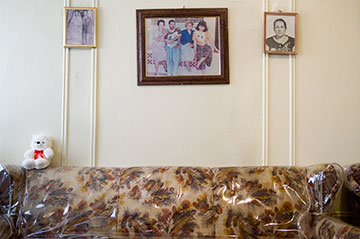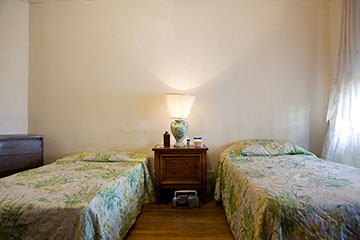On February 5, the New York University Hospital Library will host Interior Life, an exhibition of Ana Blohm’s photographs. They consist of geometrically organized shots of spare interiors, typically with beds and couches in the foreground and isolated details of decoration, such as framed pictures or light fixtures.
Born in Venezuela and based in New York, Blohm’s work represents a complicated case. She is a working doctor at Mount Sinai Medical Center who trained in photography (with Jack Lueders-Booth and Chris Killip) while studying biology at Harvard University. Her images document the interior spaces, with their drably functional objects, of the East Harlem and Washington Heights residents who are her patients. Sinai is one of several institutions currently pioneering programs that restore the “house call,” or home visit by a physician, in an attempt to save resources and manage chronic illnesses outside of the hospital.
Blohm represents an important limit case for art. This is an artistic practice that is an offshoot of medical labor. Unlike the many practices of the past two decades that have been labeled “relational” or “service aesthetics,” the service here is resolutely in the category of “not art.” Art is only produced at the point at which Blohm feels the impulse to represent something, in a mode of representation that is not of conventional use for medicine.
In some cases, Blohm includes her subjects in the photographs. As in the above image, they are turned away from the camera, refusing its gaze. It is here that the difficulty of her project is most apparent. In the instant of the photograph, she is no longer a service provider, but a documenter of a normally invisible group. Representation is not, in the end, the beneficial service that medicine is ideally supposed to be; it is not “for” someone, but “of” him or her. Art takes something, and brings into view for others. It is in precisely this sense, however, that art might be of use for medicine itself, offering a moment of self-reflection on the who and how of treatment.







